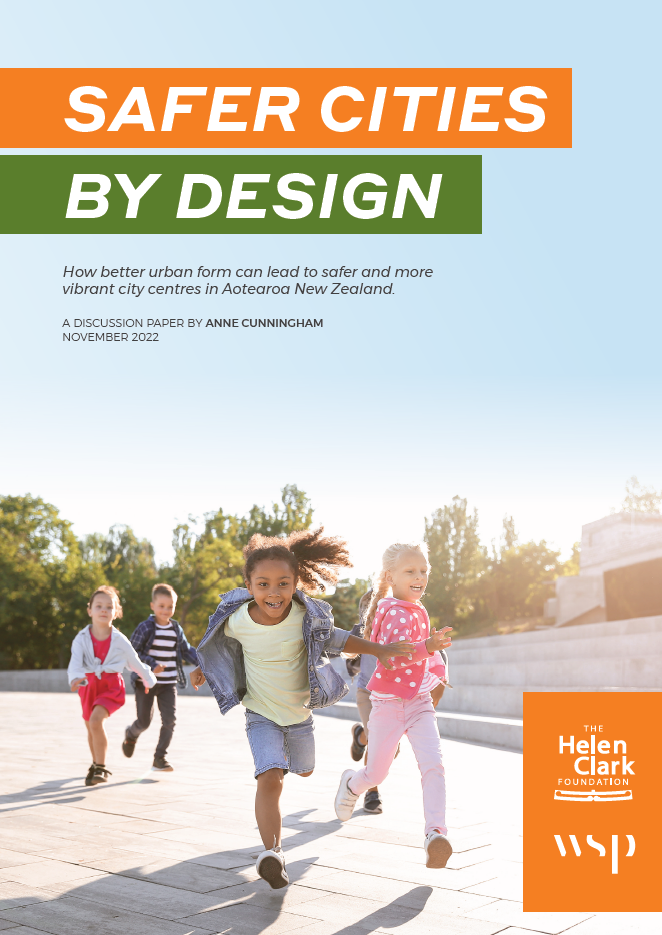Safer Cities By Design is our latest discussion paper in partnership with WSP in New Zealand. The paper recommends bringing together diverse perspectives and expertise in establishing safe urban places. It also calls for urban public places to be designed in a way that restores mana and mauri Māori.
While a review of crime data paints a complex picture, there are challenges to respond to with rising concern about public safety in our cities. Coordinated urban design interventions can help make us feel safer. These will become critically important as our cities become denser and there is more demand for public space.
The paper finds that fears about potential crime can affect where people choose to live, and whether and how they use public places. Some groups, especially women, trans and nonbinary people, children, and older people, suffer disproportionately and will often modify and limit their use of urban streets, squares, parks, playgrounds, and public buildings because of safety concerns.
The paper sets out how recent thinking on Crime Prevention through Environmental Design (CPTED) can contribute to safer cities. It discusses the conditions necessary for this to succeed, so that urban public space is open to all who want and need to use it.
Key recommendations include:
- Convene a national forum for dialogue on safety in Aotearoa New Zealand’s urban public spaces – involving central and local government, and community stakeholders.
- Update national and local authority Crime Prevention through Environmental Design guidance to reflect contemporary understanding of safer city design and Aotearoa New Zealand’s unique cultural context better.
- Develop guidance that better supports local authorities to integrate their urban design and social wellbeing functions.
- Develop a learning pathway for the spatial design profession in relation to safer city design.
A full resolution version of the report can be found here.
Read more